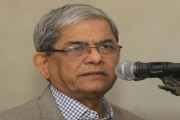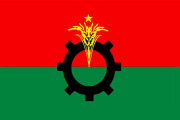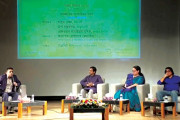Many economists think that the idea of per capita income is never realistic, it is simply a capitalist bluff. It never represents the real condition and standard of life of every individual of a country.
।। Chinmay Prasun Biswas ।।
Per capita income is a widely used term worldwide. In many cases it is used more with political implication that economic connotation. This term has been derived from Latin word per caput meaning per head or per person. It helps us to determine the average individual income and to evaluate the standard of living of the people of different countries. For instance, GDP of India and the UK is $2.8 trillion but population of India is 1.4 billion against only 67 million in the UK. Naturally, the UK stands economically stronger than India.
The procedure of calculating per capita income is very easy i.e. gross national income divided by population. Any schoolboy can work it out within a few seconds but reality is not so simple. Apparently per capita income has some advantages. It provides an opportunity to find out positive correlation with key economic indicators. It can be useful to businessmen to frame investment plan. For instance, people having low income cannot think of Ferrari or Lamborghini car. Therefore, investors have to design affordable vehicles for them.
Developing countries may attain strong gain in per capita income which may be a signal to foreign and domestic entrepreneurs to invest in there. During the initial stage of development they may establish themselves as an effective name and secure a dominant position in market.
Despite some advantages per capita income is not flawless because it is based on average statistics that has misleading outcomes. For instance, India, Ghana, and Nigeria have a relatively similar per capita income at around $2,000. According to the latest World Bank data over 50% of the Nigerian population live in absolute poverty. Inversely, India and Ghana have 21% and 13% of their respective populations in severe poverty. The reason is extreme disparity in distribution of wealth and income. Few people at the top are extremely rich whereas millions at the bottom are ultra-poor.
Per capita income calculates the economic output of the total population but there is wide difference in age. Many children, students, unemployed and aged persons do not contribute anything to economic output but they are theoretically included in calculation. Without earning or producing anything they are getting a share of income as windfall gain.
Per capita income doesn’t include an individual’s savings or wealth. A wealthy person might have a low annual income but draws from savings to maintain a higher standard of living but per capita calculation will show him as a low-income earner.
Many economists think that the idea of per capita income is never realistic, it is simply a capitalist bluff. It never represents the real condition and standard of life of every individual of a country. The main procedure should be basic need approach. Fulfillment of basic needs i.e. food, cloth, house, education and healthcare should be the only scale to measure standard of living. A handful of persons are enjoying these more than requirement whereas crores of others are not getting even a fraction of the minimum. They humourously say that for many days you have fed us American (capitalist) food. Now it is time to test the taste of Russian (socialist) menu. Socialism is now extinct but whatever be the level that was the only system that fulfilled the basic needs of an individual.
A recent report informs that per capita income of Bangladesh is US $ 2,554 per year as calculated by Statistical Bureau. This report has not yet been officially published by government. Some economists say that this amount is 15% higher in comparison to earlier year and more than that of South Asian countries. However, this matter is always disputed because the procedure of calculation is never beyond question. This report is not also free from controversy.
Economist Dr. Fahmida Khatun thinks that these figures do not give true picture of income of the people. As argument she said that the number of rich and super rich people in Bangladesh is increasing rapidly. But number of poor people is increasing. At the same time, inequality in society and rift between people’s incomes are mounting. “This situation is not reflected in official statistics. That is why it is not important to the people,” she remarked. As a result, it is natural to have dispute about per capita income that is being shown now. (BBC Bangla, Dhaka, 10th November, 2021)
For example, she said, “When a forest is cut down and an industry is set up, output of that factory is added as national income but the loss of forest is not counted. There are many such issues.” That is why she thinks that it is a wrong procedure of statistics.
Planning Minister MA Mannan said that since there are a large number of poor people in the country there could be different views on per capita income but this practice is recognised by the United Nations. It is followed in all countries of the world. As per version of Bangladesh Bureau of Statistics national income is calculated by adding remittances to domestic income in a year. According to some economists, this procedure is not practically correct because people residing inside the country have no role in earning remittance.
As per accounting rule loan is to be deducted from gross income to arrive at actual income. According to statistics of central bank, at present per capita loan of Bangladesh is US $ 460 i.e. Tk. 39,000. Experts think that this point must be considered while counting per capita income.
The writer is a former Commissioner of Taxes.










































































































































































